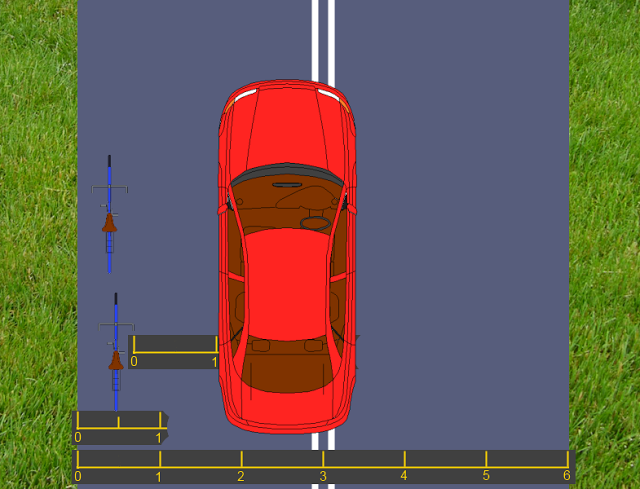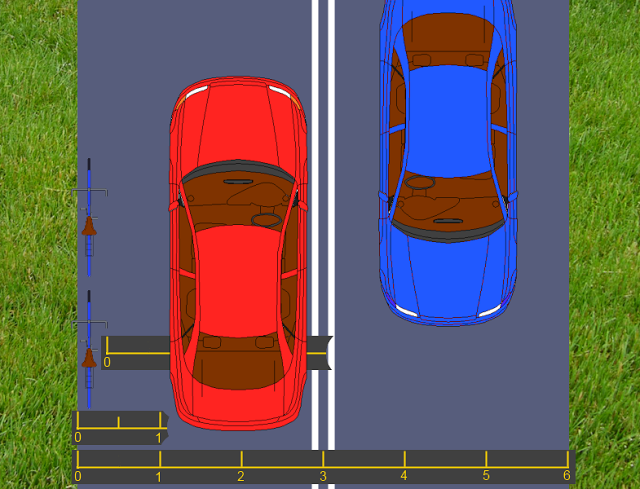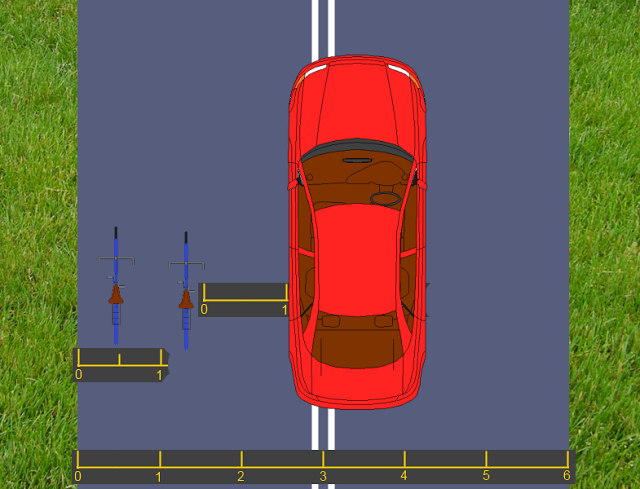One of the most contentious Tasmanian road rules regarding cyclists is the Two Abreast Rule (quote here from VicRoads):
Bike riders must not ride more than two abreast (two bike riders riding next to each other) unless overtaking. Bike riders riding two abreast must not ride more than 1.5 metres apart.
Whenever this rule is mentioned, you’ll typically also get some free advice:
When riding two abreast please consider other road users and, if necessary, change to single file to allow motor vehicles to overtake safely.
So, my question today is, when is it safe for motor vehicles to overtake? I’m going to look at this in the context of Bonnet Hill in Hobart. Channel Highway on Bonnet Hill is a narrow, 60km/h semi-rural road connecting Hobart and Kingston. It is a minor road, and most traffic uses the 100km/h Southern Outlet. There are no overtaking sections on Bonnet Hill. It is one of the most-used bicycle routes in Hobart.
In terms of my measurements, here are the basics. Bonnet Hill is fairly typical of Tasmanian rural roads — in fact it is wider than many roads around Hobart.
| Lane width | 3m (total roadway 6m) |
| Typical bicycle width | 0.45m |
| Typical car width | 1.75m |
| Recommended distance from edge of road for cyclist (to tyre) | 0.5m |
| Recommended minimum distance between car and cyclist when passing | 1m (urban)/1.5m (rural) |
| Typical distance between double file cyclists | 0.5m (max 1.5m) |
When a car driver wishes to pass a cyclist on this road, can they do this both legally and safely? Let’s look at this graphically. In this hand-crafted image I have even moved the car closer than recommended for a rural road: only 1 metre from the cyclists who are riding single file.
 |
| Is it safe and legal to pass? The measurements shown are in metres |
Well that’s pretty clear. Either the driver has to illegally cross over the double line, or they have to pass at an unsafe distance. Personally, I’d prefer that they pass safely!
This clearly also illustrates that regardless of the legality, on a road such as Channel Highway over Bonnet Hill, it is never safe to pass if there is oncoming traffic. A minimum of a metre is so important.
Why is a metre important? Here are several reasons:
- A cyclist may be forced to negotiate around debris or damaged road surfaces, especially if they are riding close to the edge of the road. This means you cannot be sure they’ll take a perfectly straight line while you pass them.
- With cross or gusty winds, a cyclist may be abruptly blown sideways with little or no notice.
- If you pass too close, the wind of your passing will blow the cyclist about and may even suck them into your vehicle.
- Driving past at speed will startle the cyclist and that may cause them to crash. Consider: if you pass a cyclist riding at 20km/h at 100km/h (as one motorist recently admitted doing), that is equivalent to being overtaken on the Midlands Highway by a car doing 190km/h. Do you think perhaps you would not be expecting that? How much time do you think you’d have to become aware of a vehicle approaching from behind at that sort of speed differential?
The next diagram illustrates again why there is not enough space to pass bicycles when there is oncoming traffic. As I have shown, even if the cyclists move onto the very edge of the road, there is insufficient space between the car and the cyclists.
 |
| Oncoming traffic: is it safe to pass? No: that’s considerably less than a metre between the car and the bikes. |
OK, so consider what happens if you do try to pass when an oncoming car is approaching, and you run out of space. What will you do? That’s right, you’ll instinctively swerve to avoid the oncoming car, and the loser is the cyclist.
 |
| Overtaking when there isn’t room. Hitting the poor cyclist is the likely outcome. |
Finally, let’s look at the double file situation. Here we have two cyclists riding 50cm apart, in the recommended position on the road. The car is giving the cyclists 1m of space. Again, this is technically illegal, but it is safe for the cyclists. The situation for the driver is no different: they must still ensure there is no oncoming traffic.
 |
| Safely (but illegally) passing double file cyclists. The car is only 1m further right. |
So, in the end whether the cyclists are single file or double file, the driver always needs cross into the oncoming traffic lane in order to safely pass, at least on typical Tasmanian rural roads. Also note that you can actually pass double file cyclists in a shorter time than when the cyclists are riding single file!
And to finish off, I wonder if a common sense clause in the road rules could be a help in resolving the conflict between drivers and cyclists on these low-traffic Tasmanian rural roads? Something like:
When passing slow moving bicycles, horses, or farm vehicles the vehicle is permitted to cross a solid centre line if and only if there is no oncoming traffic and the driver can clearly see that it is safe to do so.
Well, I discovered a road rule today that I wasn’t aware of (or hadn’t remembered):
A driver on a road with a dividing line may drive to the right of the dividing line to avoid an obstruction if the driver has a clear view of any approaching traffic; and it is necessary and reasonable, in all the circumstances, for the driver to drive to the right of the dividing line to avoid the obstruction; and the driver can do so safely (Rule 139)
Other relevant road rules
Sounds like that resolves the issue! Now for people to learn this rule!